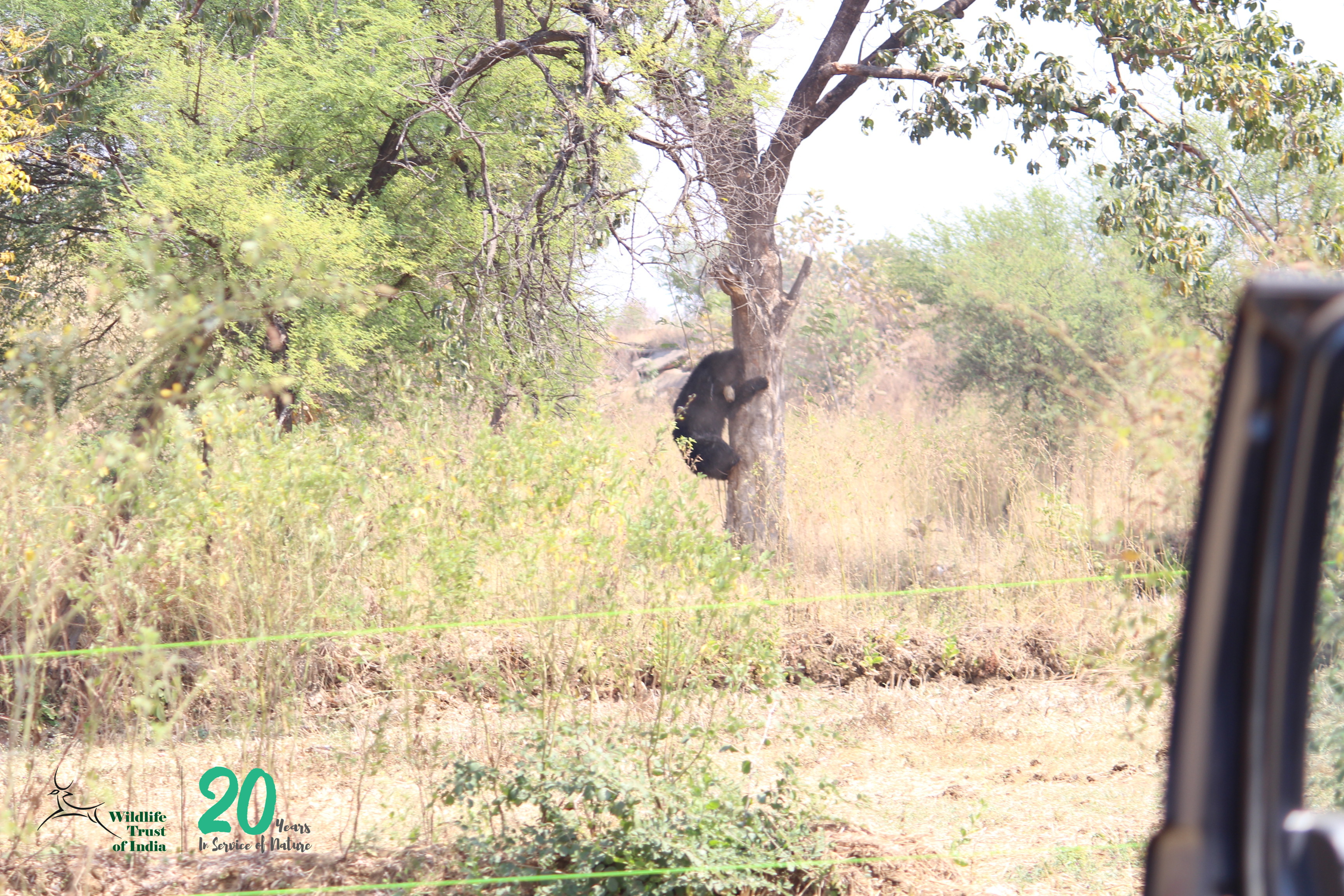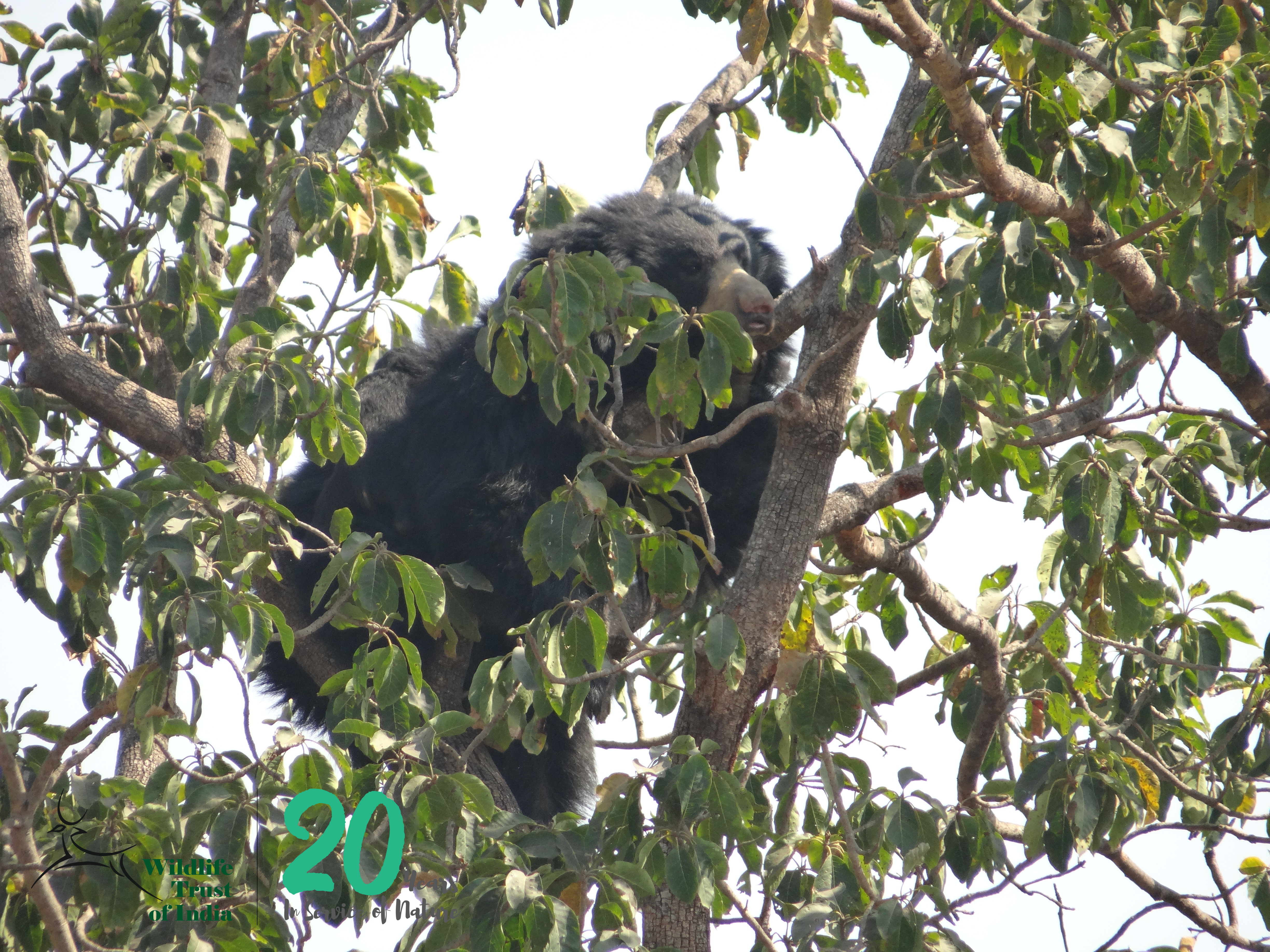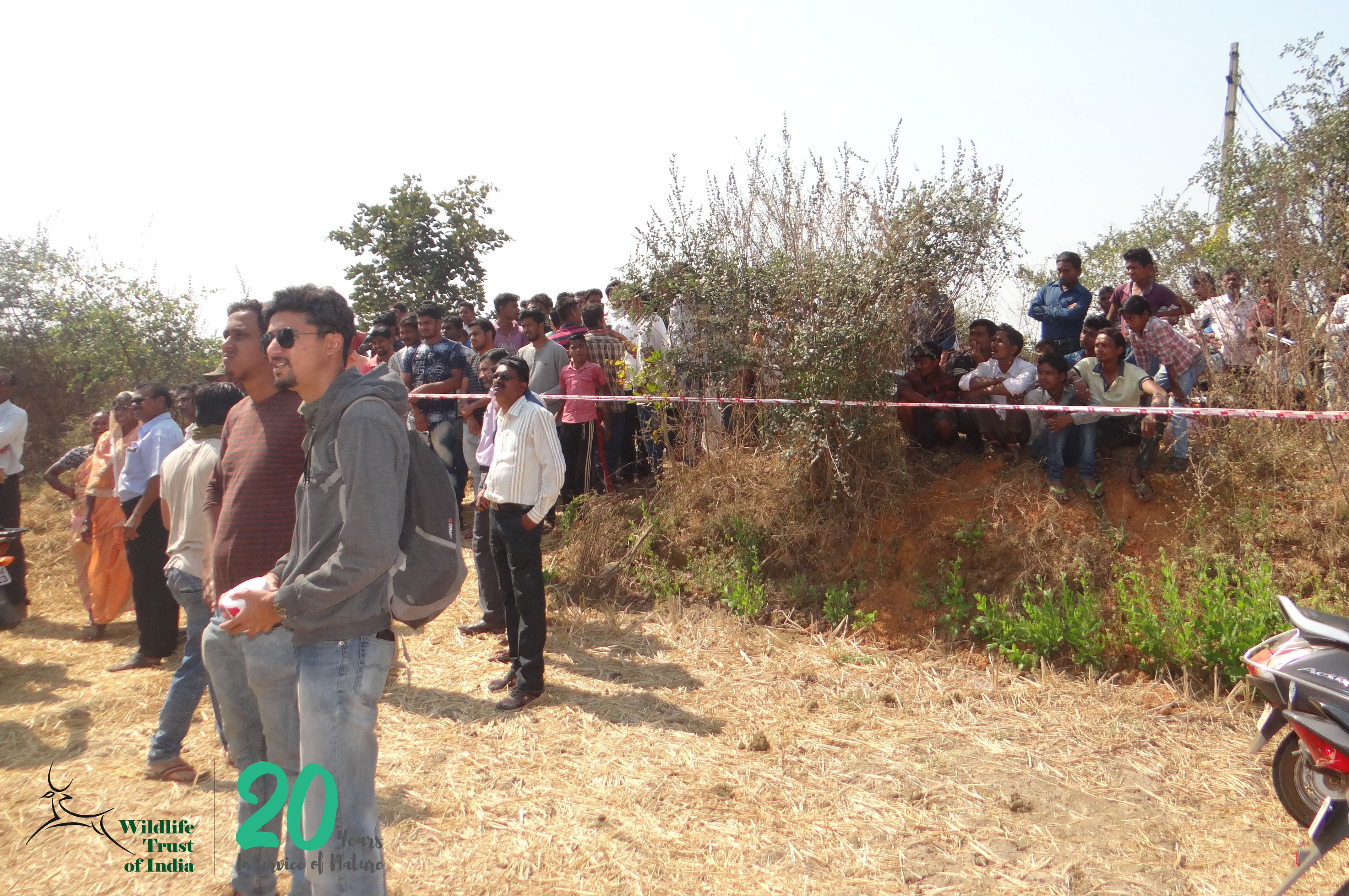On a cool winter morning, after having done with my tea and breakfast, I was finishing some data entry work when one of my colleagues, who had gone to attend the post-mortem of a tiger, called. At the most I was expecting out of this call was to know they were done with the post-mortem and will be heading back soon. But the life of a Rapid Response Team (RRT) member is anything but predictable! It was a rescue call and the word ‘Bear’ just hung in the air…..That word rang sirens in my head and not just bells as I remembered an incident from the previous year when a bear had killed one and injured five people in a village in Bramhapuri. A chill went down my spine anticipating the worst.
Sloth bears usually stick to the forested areas where they find all the food they want. Sometimes they may venture out towards the village to give birth (as you may have already read in one our stories ‘In the lap of Humanity’) or to feed on Bor (Ziziphus mauritiana) fruit which is found in abundance around the villages and farms. Bears have a very strong sense of smell and very weak eyesight. Characteristically, they walk with their head very close to the ground, sniffing for smells of interest, which is why they don’t realise it unless they are very close to a human being. Their first reaction is to stand up and they can stand up to MY height! I am over 6 feet tall. At the slightest hint of the threat they will attack and with those 4 inch sharp claws, they can wound you seriously.

Wildlife Trust of India’s Rapid Response Team posted in Bramhapuri in the Vidarbha landscape attended to this bear rescue case. After finishing the post-mortem procedure of a tiger, they received a call regarding a sloth bear which had climbed on a tree in a farm and the villagers had gathered all around the tree. The team was about 50km away from the spot and as soon as I got a call from them, I collected the camera, binoculars and caution tapes and rushed to the spot.
The tree on which the bear had climbed was right in the middle of an agricultural field which was not very far from a road on one side. On the other side was the Gosikhurd canal. The bear was clearly visible in the low foliage tree and what was concerning was the crowd that had gathered from all sides. The road was blocked due to parked vehicles for almost a kilometre and now people were entering into adjacent fields to see the bear. The entire area was jam-packed within a radius of 100m. The only logical reason one could derive out of it was that the bear must have climbed the tree when someone chased it to drive it away and locals confirmed it.

The Tiny Problem
RRT quickly sprang into action and took the help of forest department staff in evacuating the area. Meanwhile, I lifted my binoculars to understand why the bear had climbed a fruitless tree in the middle of nowhere. When I focussed a bit more, I saw something moving on the back of the bear. Something I was not able to see clearly as few leaves were blocking my view. I climbed into the back of the vehicle to get a better view and to my surprise, what I saw got me really worried. A cub!
All the carnivores are protective towards their young ones and might attack without warning if they feel there is a threat. With the experience from last years’ incidence and looking at the gathered crowd, I really did not wish to even imagine what could happen if we didn’t act immediately.
We checked the status of the bears and ensured that both of them were safe. Our sociologist had already started to calmly talk to the gathered crowd and the entire RRT now started helping him, requesting and reasoning with the crowd to maintain a safe distance. A perimeter of 100m was created around the tree using caution tapes and ropes, for the bear to feel safe to climb down and we had stationed small teams on all sides, at a safe distance, so as to not lose sight of the bear in the tall grass once it climbs down.
The bear was struggling to come down of the tree as it had climbed in a hurry and maybe didn’t know how to climb down swiftly along with the cub. It took its time to decide which branch to climb down from. A crowd of over 1000 persons were watching the bear and with every step she took, there was a spur in the crowd. The bear came halfway down when the cub started losing its grip on the mother. Unfortunately, the cub fell from a height of 10ft. The mother bear realised this and with one swift movement, she went close to the cub. The cub was fine. Immediately she started walking away from the crowd and towards the canal while encouraging her cub to keep up. Though the cub was piggybacking on his mother while on the tree, it was old enough to walk with her.

Down but not done
For us, the rescue did not end with just the bear climbing down the tree with her cub. It was most important to ensure that it moved away from the settlement, the farmland and the crowd that had gathered. So we decided that one team will follow the bear from a safe distance without disturbing it and the other teams will ensure that the crowd disperses calmly and immediately. The bear seemed in no hurry and took its sweet time to slowly amble away from the crowd. Even we took a breath of relief seeing the bear move away but only a moment too soon. There were more people! Despite our requests and warnings, who would imagine that some people will be waiting on the other side of the canal? Excitedly they said that they had not seen the bear and were hoping to catch a glimpse. I often think that animal rescue by means of providing safe-passage may be the easiest but the most difficult part of a rescue is to keep the crowds at bay. With timely help from the Police department, we were able to clear away the humans from the bear’s path. It was now truly a moment of relief to watch the mother move away along with her cub and as it disappeared into the thick undergrowth, we decided to leave it on its own.